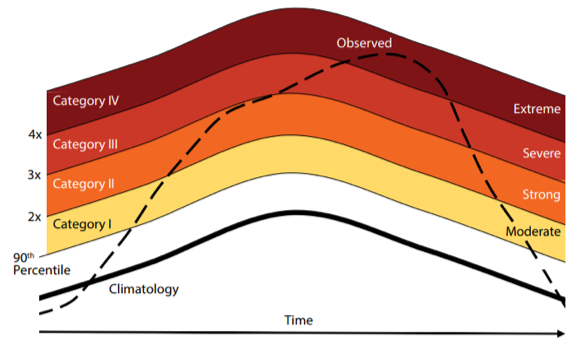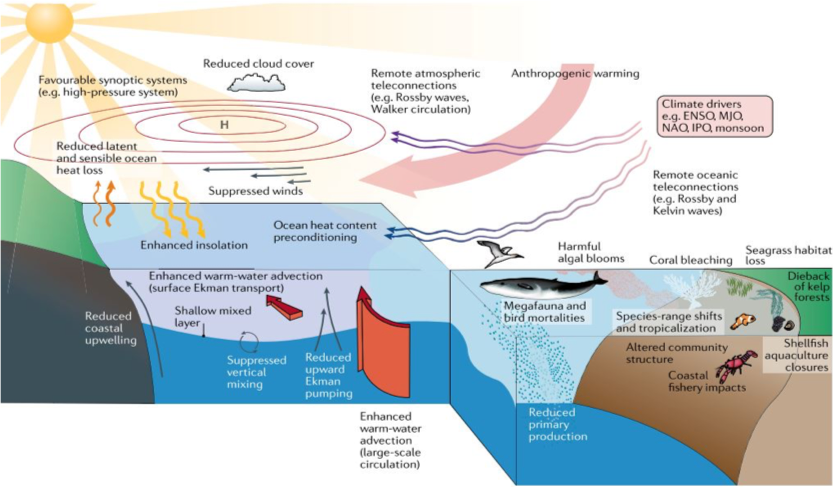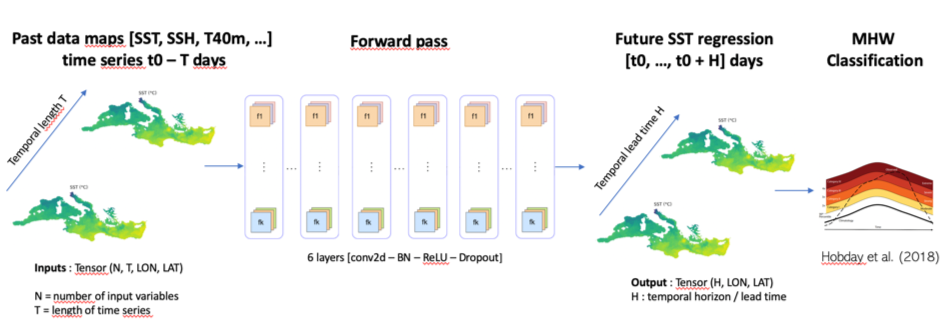About
The production of this interactive story has been possible thanks to the efforts of CLS (France), Lobelia Earth (Spain) and under ESA funding. Data used for visualisation has been extracted from the Copernicus Marine Service MyOcean Viewer and from CLS datasets. The former consists of Sea Water Potential Temperature at the ocean surface, or Sea Surface Temperature (SST) with product ID GLOBAL_ANALYSIS_FORECAST_PHY_001_024 published on the 14th October 2016 by Mercator Ocean International. The latter consists of a dataset of daily Marine Heatwave categories over the Mediterranean Sea containing data for the last 30 years.
This story was produced in the context of European project Digital Twin Ocean Precursor.
References
1 Hobday, A. J., Alexander, L. V., Perkins, S. E., Smale, D. A., Straub, S. C., Oliver, E. C. J., Benthuysen, J. A., Burrows, M. T., Donat, M. G., Feng, M., Holbrook, N. J., Moore, P. J., Scannell, H. A., Sen Gupta, A., & Wernberg, T. (2016). A hierarchical approach to defining marine heatwaves. Progress in Oceanography, 141, 227–238. DOI: 10.1016/j.pocean.2015.12.014.
2 Ham, YG., Kim, JH. & Luo, JJ. (2019). Deep learning for multi-year ENSO forecasts. Nature 573, 568–572. DOI: 10.1038/s41586-019-1559-7.
3 Biard, J. C., & Kunkel, K. E. (2019). Automated detection of weather fronts using a deep learning neural network. Advances in Statistical Climatology, Meteorology and Oceanography 5(2), 147–160. DOI: 10.5194/ascmo-5-147-2019.
4 Oliver, E. C. J., Donat, M. G., Burrows, M. T., Moore, P. J., Smale, D. A., Alexander, L. V., Benthuysen, J. A., Feng, M., Sen Gupta, A., Hobday, A. J., Holbrook, N. J., Perkins-Kirkpatrick, S. E., Scannell, H. A., Straub, S. C., & Wernberg, T. (2018). Longer and more frequent marine heatwaves over the past century. Nature Communications 9(1). DOI: 10.1038/s41467-018-03732-9.
5 Frölicher, T. L., & Laufkötter, C. (2018). Emerging risks from marine heat waves. Nature Communications. 9(1). DOI: 10.1038/s41467-018-03163-6.


